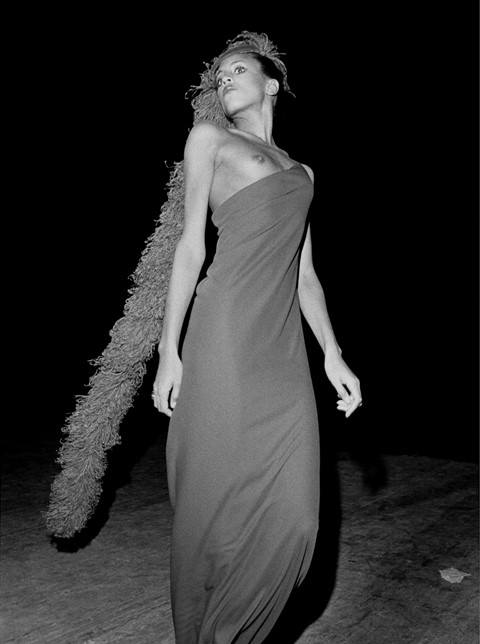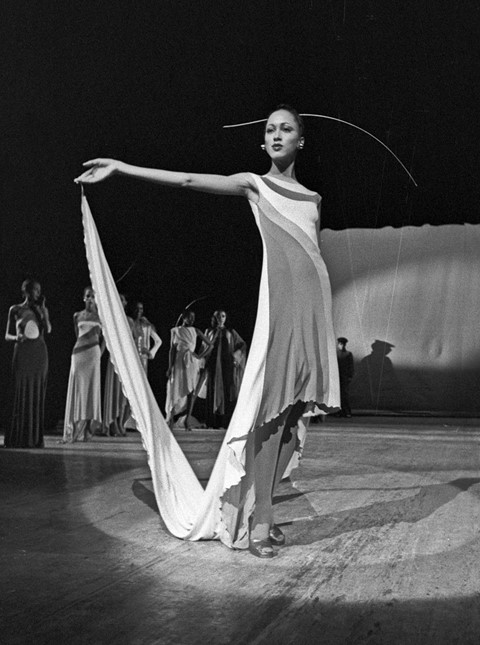51 years ago, within the storied walls of the Chateau de Versailles, five French designers took on five American designers in a monumental charity fashion show remembered as “The Battle of Versailles.” Rizzoli’s new publication The Battle of Versailles: The Fashion Showdown of 1973, authored by Mark Bozek, offers novel insight into the significance of the occasion with never-before-seen photographs from Bill Cunningham and Jean-Luce Huré, accompanied by excerpts from Cunningham’s diary entries of the time.
Officially known as Le Grand Divertissement à Versailles, the star-studded event was organised to raise funds towards the restoration of the Chateau. However, once the line-up of the fashion show was announced (with Marc Bohan for Christian Dior, Pierre Cardin, Hubert de Givenchy, Yves Saint Laurent, and Emanuel Ungaro from France; Bill Blass, Stephen Burrows, Oscar de la Renta, Halston, Anne Klein from the USA), the press was quick to pit it as a competition. To everyone’s surprise, the USA were crowned the unofficial winners, marking the end of the predominance of couture over ready-to-wear fashion.
Below, in her own words, supermodel Pat Cleveland – who led the charge of models for “Team USA” and is a contributor to Rizzoli’s new publication – takes us on a trip down memory lane to relive fashion’s most famous walk-off.
“I was living in Paris at the time and then I received this phone call saying, ‘Please come back to rehearse for the benefit show at Versailles.’ So, I flew back to America to do rehearsals with Kay Thompson, the choreographer. She was the godmother of Liza Minelli, and she did the film Funny Face. She’s also Eloise at the Plaza – she wrote that book. We did the rehearsals for two, three weeks. Each girl chosen had to walk for at least three of the five designers, but I was walking for them all.
“Finally, the big day comes. We all had to get our passports. And in those days, you could party on an aeroplane. So, you can imagine, the belly of the plane was full of all these American couture clothes. And then on the floor we were all dancing in the aisles, drinking champagne, laughing. We were like a bouquet of crazy mixed nuts all going to Paris! We had every colour of the rainbow as far as girls go.
“When we got off the plane (in those days you went down the stairs and straight on to the tarmac) some of us girls kissed the ground we were so happy to be in France! As Black American girls, our idol was Josephine Baker. She was the girl who got away from slavery, went to Europe, and became the biggest star in the world.

“So, we are in France. We’re on a bus heading to Versailles, where our hotel is, and as we approach the Palace – remember, it’s December – the most miraculous, beautiful, fairy-tale image that you could ever imagine unfolds. That little hill, the cobblestones. Then the snow starts falling and it looks like something out of a storybook. The Palace is dusted in sugary white snow.
“We get out and head into the theatre but it’s freezing cold in there because nothing had been repaired! It wasn’t what you’d call ‘American comfortable.’ No heating, no toilet paper, no food. We’re waiting for our rehearsal, but the French have so much scenery and so many scene changes, and the designers had all the time in the world to rehearse. We, on the other hand, didn’t get a minute – they kept pushing us back later and later, until it was midnight. We’re there, looking at our watches, wondering when we’d finally get to go.
“It turned heads toward a new kind of beauty and opened the door for American ready-to-wear fashion in Europe. It was such a win for America” – Pat Cleveland
“That was kind of where the dynamic of the Battle of Versailles came from. The Americans and the French were from different cultures, with different timing, and different attitudes. You could see the contrast – American designers are efficient, like a machine, tick-tick-tick, finishing on time. But the French were more relaxed.
“Backstage there was drama. Oscar [de la Renta] wanted to go both first and last, but Halston also wanted those spots. Then, Kay Thompson walked out of the show and refused to do rehearsals. Fashion and theatre are so different, right? In theatre, there’s etiquette backstage – it’s quiet, no one speaks. But in fashion, it’s chaotic. People are running around, screaming like two-year-olds. Kay couldn’t stand it any longer, so she walked out. There was no one left to help us organise. She wasn’t there to help Stephen, Oscar, Bill, or anyone else – just Halston. Everyone thought she was supposed to handle choreography for every show. So, the designers had to take things into their own hands to organise the American show as a unit.

“The one saving grace was the music. We had the best R&B from America. We had James Brown, Marvin Gaye, The Temptations. We didn’t have an orchestra or any of the things the French had; all we had was a cassette tape. Can you imagine doing a show for five designers with music running just on a cassette tape? But we had the girls who could move. We could prance back and forth like no one had seen. We were backstage, waiting forever, cold and hungry, with no bathrooms. But when the music came on, we were ready.
“Our show only took half an hour, whereas the French show dragged on for two hours. I remember that I accidentally stepped on [Rudolf] Nureyev’s toe before he went on stage! I was running in stilettos, and I stepped right on his toe. After that, whenever Nureyev saw me, he’d always step back, joking, ‘Please don’t step on me!’ It became a running gag between us.
“Stephen Burrows told us to get out front and pose, and I was the leader of the gang, so I started it for us. We did the first voguing and posing, long before Madonna. The entire audience was so captivated by our energy. They were so tired from sitting through the French segment. So, they embraced us with applause, throwing their programs in the air! Princess Grace was there, loving it. Josephine Baker hugged all the American girls.
“We delivered a show that was so modern – it was like cutting butter with a hot knife. We presented the feeling of freedom and independence. We brought a fresh, new direction to France. We offered them a bouquet of the future, and we did it with love.

“We made a lot of friends. The Duchess of Windsor was there, and I remember having dinner with her. Liza Minnelli was there. Then we went out to Regine’s [club] and partied. It was such a big deal – Americans in Paris, and all the Black girls were suddenly being recognised for their extraordinary elegance. After that, the Black girls had opportunities to return to Europe and work in the major fashion houses – Givenchy, Saint Laurent, all the couturiers.
“It turned heads toward a new kind of beauty and opened the door for American ready-to-wear fashion in Europe. It was such a win for America. And I was there as part of it, which made me so happy. It was such a good time, being with your comrades, your friends, flying across the ocean together. It made history.
“So many designers have passed away – like Givenchy, Klein, Bill Blass, and Saint Laurent – but they will always be part of that story. Yes, it’s a story that stays in your heart forever” – Pat Cleveland
“Now, let me tell you something about Bill [Cunningham] who was there. He’s really of the people. If someone tries to get photographed by him, he’ll go in the opposite direction and find the person who’s least likely to be photographed but has real style. Bill was like family to us. He was always watching, always inspiring people, making us feel like we were truly working.
“There was also the French photographer Jean-Luce Huré, he was so lovely. He and Bill were part of our gang. They knew how to capture everything. There’s even a photo of me trying to eat a sandwich on the marble floor, starving. That baguette looked a little phallic, but anyway … they did a great job.

“When I visited Versailles last summer, the crowds seemed to disappear, and all I could see was the glamour of flickering candlelight, cherubs dancing on the ceiling, and the little golden chairs. I could see all the beautiful clothes piling into those hallways. The ghost of that party is always before my eyes. So many designers have passed away – like Givenchy, Klein, Bill Blass, and Saint Laurent – but they will always be part of that story. Yes, it’s a story that stays in your heart forever.”
The Battle of Versailles: The Fashion Showdown of 1973 by Mark Bozek is published by Rizzoli, and is out now.






